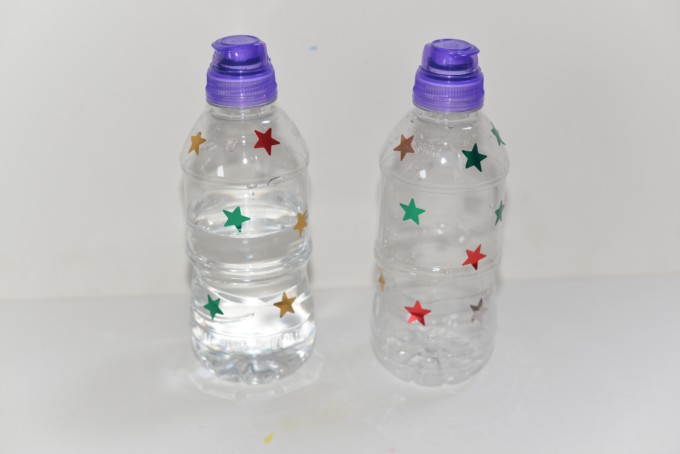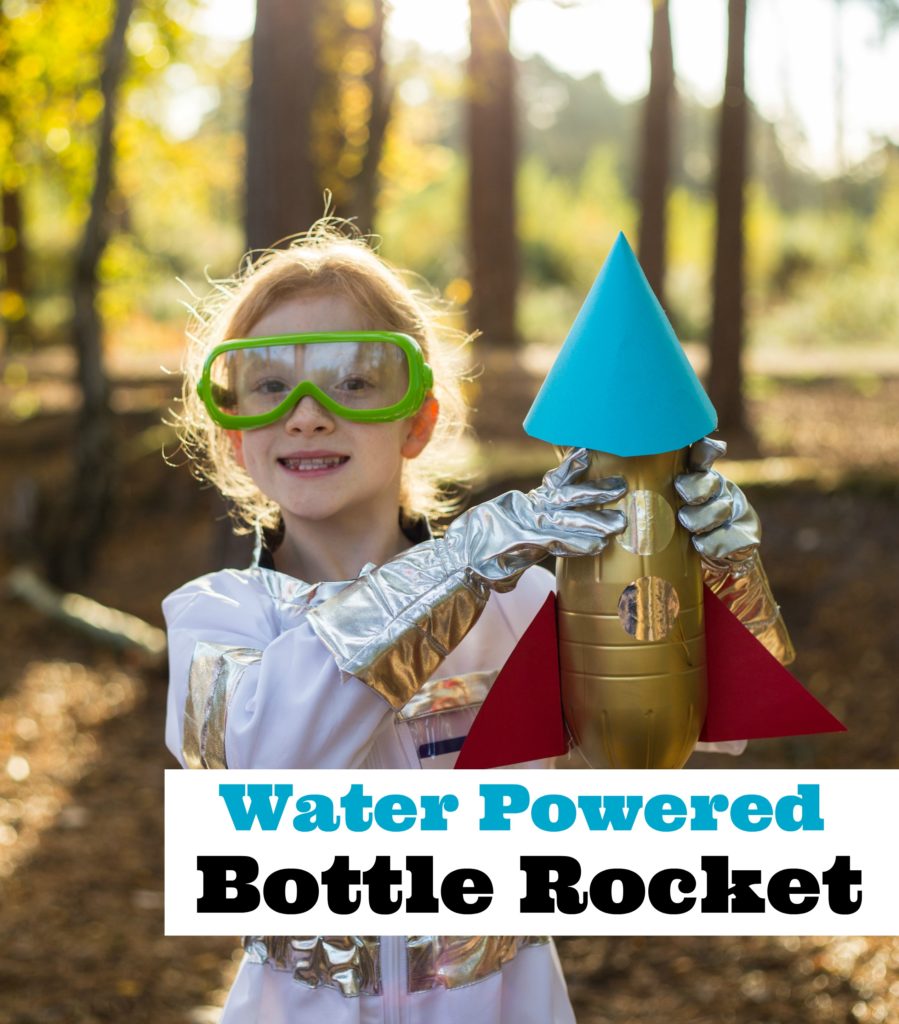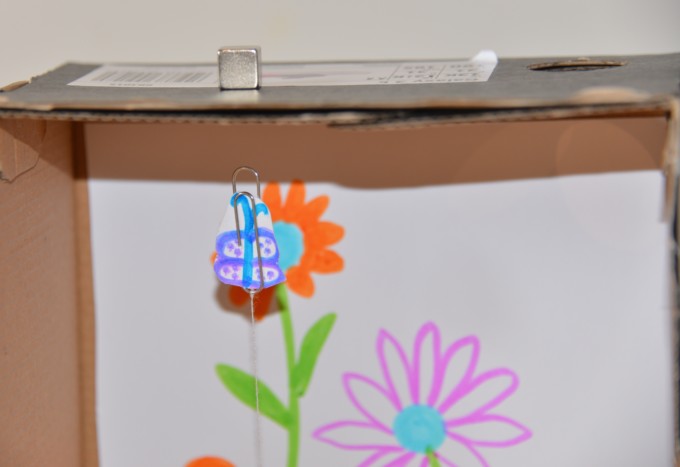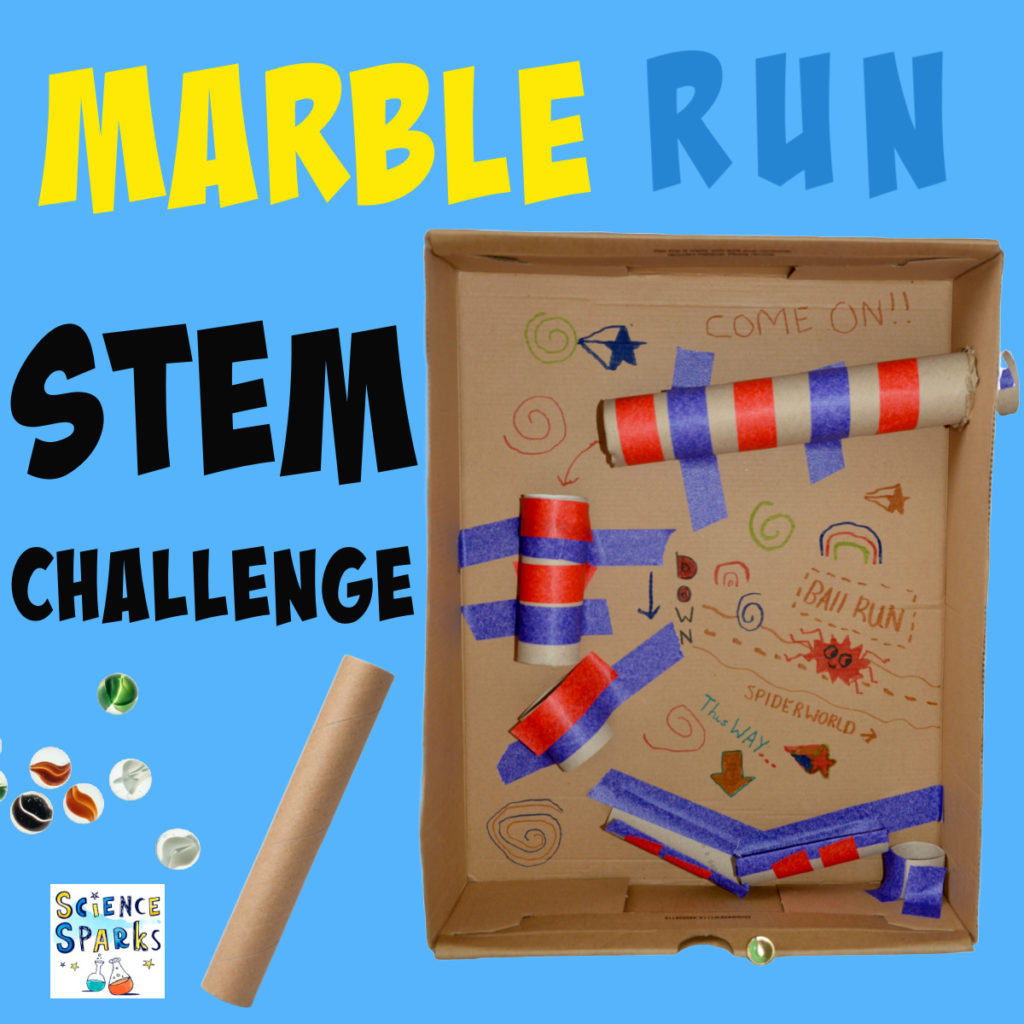- Skip to primary navigation
- Skip to main content
- Skip to primary sidebar

- FREE Experiments
- Kitchen Science
- Climate Change
- Egg Experiments
- Fairy Tale Science
- Edible Science
- Human Health
- Inspirational Women
- Forces and Motion
- Science Fair Projects
- STEM Challenges
- Science Sparks Books
- Contact Science Sparks
- Science Resources for Home and School

Gravity Experiments for Kids
July 5, 2021 By Emma Vanstone Leave a Comment
These gravity experiments are all fantastic demonstrations of gravity and a great way to learn about Isaac Newton and Galileo ‘s famous discoveries. If you enjoy them, do check our my book This IS Rocket Science which is full of exciting space activities demonstrating how rockets overcome gravity and other forces to launch into space followed by a tour of the solar system with an activity for each planet.
What is Gravity?
Gravity is the force that pulls objects towards the Earth. It’s the reason we walk on the ground rather than float around.
Gravity also holds Earth and the other planets in their orbits around the Sun.
Did you know – gravity exists on the Moon but it is not as strong as on Earth, which is why astronauts can jump higher on the Moon than on Earth. This article from ScienceAlert tells you how high you could jump on each planet in the Solar System compared to Earth.
Great Gravity Experiments for Kids
Galileo and gravity.
Galileo was a famous scientist in the 16th and 17th Century. His most famous observation was that two objects of the same size but slightly different mass (how much “stuff” it is made of) hit the ground at the same time, as far as he could tell, if they are dropped from the same height. This happens because the acceleration due to gravity is the same for both objects and that actually this acceleration has nothing to do with the mass of an object. This fact has been demonstrated many times, even on the moon with a feather and a hammer.
Back on our air-filled planet, if a feather and a ball are dropped from the same height they clearly do fall at different rates. This is because gravity is not the only force acting on the falling object, air resistance is also a factor and that does depend on quite a few properties of the object and the fluid it is falling in. This does include its mass, the surface area and how fast it is moving. The feather suffers a lot here being so light and having a much greater surface area.
Galileo dropped two balls of different weights but the same size off the Leaning Tower of Pisa, giving a hint that the mass of an object doesn’t affect how fast it falls.

However if a ball and feather are dropped in a vacuum , where there is no air resistance as there’s no air, the ball and feather will fall together and hit the ground at the same time.
Bottle Drop Experiment
Following on from the ball and feather experiment another great example of Galileo’s discovery is to half fill one plastic bottle and leave another ( the same size ) empty. If dropped from the same height they will hit the ground at the same time!

Issac Newton and Gravity
According to legend Issac Newton was sitting under an apple tree when an apple fell on his head, which made him wonder why if fell to the ground.
Newton published the Theory of Universal Gravitation in the 1680s, setting out the idea that gravity was a force acting on all matter. His theory of gravity and laws of motion are some of the most important discoveries in science and have shaped modern physics.
Film Canister Rocket
A film canister rocket is a fantastic demonstration of all three of Newton’s Laws of Motion , but it falls back to the ground thanks to gravity.
Water powered bottle rockets are another great fun example of gravity and lots of other forces too!

Defy gravity with a magnet
Did you know you can defy gravity using magnets. We love this activity as you can theme it however you want. Your floating object could be a spaceship in space, a flower growing towards the sun or even a plane in the sky.
The magnet holds the paperclip in the air as if it’s floating!

Straw Rockets – Gravity Experiment
Create your own straw rockets and launch at different angles to investigate how the trajectory changes. Of course these don’t have to be rockets, they could be anything you want, so get creative!
Parachutes are another great gravity experiment and perfect for learning about air resistance too!
Marble Runs
A DIY marble run is another hands on way to demonstrate gravity. Can you build one where the ball has enough energy to move uphill?

DIY Sling Shot
Finally, a simple slingshot is a brilliant and simple STEM project and perfect for learning about gravity as a shower of pom poms fall to the ground!

Last Updated on May 25, 2022 by Emma Vanstone
Safety Notice
Science Sparks ( Wild Sparks Enterprises Ltd ) are not liable for the actions of activity of any person who uses the information in this resource or in any of the suggested further resources. Science Sparks assume no liability with regard to injuries or damage to property that may occur as a result of using the information and carrying out the practical activities contained in this resource or in any of the suggested further resources.
These activities are designed to be carried out by children working with a parent, guardian or other appropriate adult. The adult involved is fully responsible for ensuring that the activities are carried out safely.
Reader Interactions
Leave a reply cancel reply.
Your email address will not be published. Required fields are marked *
- Skip to primary navigation
- Skip to main content
- Skip to primary sidebar
Teaching Expertise
- Classroom Ideas
- Teacher’s Life
- Deals & Shopping
- Privacy Policy
Gravity Activities For Middle School: Experiments, Puzzles, Challenges, And Investigation
January 28, 2024 // by Cassie Caroll
The concept of gravity becomes much more accessible through hands-on materials and activities. When your student is ready to learn about gravitational forces, the laws of motion, and air resistance, an engaging demonstration of these abstract ideas can make instruction that much more effective. With some simple materials, you can recreate these demonstrations of gravity in the comfort of your own home. Here are some of our favorite gravity activities that are instructive, entertaining, and user-friendly!
Center of Gravity Activities
1. center of gravity experiment.
Jumpstart your learner by challenging them to a seemingly impossible challenge: balancing a craft stick on top of a chopstick. For this activity, you’ll need a couple of clothespins, a chopstick, a craft stick, and some pipe cleaner. By the end, your student will begin to visualize the center of gravity.
Learn More: Rookie Parenting

2. Gravity Puzzle
We’ll admit, at first this activity seems far more complex than necessary. To simplify the setup process, start the gravity puzzle video at 2:53 for easier design. This experiment with a balance point and center of gravity will quickly become a favorite magic trick, too!
Learn More: YouTube
3. Uncanny Cancan
Ever seen a soda can do ballet? Now is your chance with this center of gravity lab! We love this activity because it can be as quick or lengthy as you’d like depending on the number of trials you perform, and all you need is an empty can and some water!
Learn More: ABC
Velocity and Free Fall Activities
4. falling rhythm.
This experiment is relatively simple in execution, but more complex in analysis. As your learner listens to the rhythm of the falling weights, consider contextualizing their observations with the basic ideas of velocity, distance vs. time, and acceleration.
Learn More: Exploratorium
5. Egg Drop Soup
This egg drop trick is another experiment that can begin with a challenge: how do you drop an egg into a glass of water without touching either one? This demonstration gives learners the chance to better understand balanced and unbalanced forces in action.
Learn More: Generation Genius
6. Origami Science
Understanding the balance between gravity and air resistance can be quite simple with some simple materials and a bit of origami. This activity lends itself well to opportunities to make a claim with evidence as you modify your origami drop.
Learn More: Little Bins for Little Hands
Gravitational Phenomenon Demonstrations
7. gravity defiance.
Although this experiment is demonstrated with younger children, this can be an excellent lesson opener to introduce the role of gravity and gravitational pull. Challenge your student to experiment with distance and magnetic strength by trying different positioning of the magnet and clips!
Learn More: Buggy and Buddy
8. Air Pressure and Water Weight
To demonstrate the concept of air pressure, all you need is a glass of water and a piece of paper! We especially love how this resource provides a thorough lesson plan and a Powerpoint with notes to complement the experiment.
Learn More: Cool Science Experiments HQ
9. $20 Challenge
We promise, no money will be lost in this experiment. But if you’d like to play it safe, you can always make it a $1 challenge! Test your students’ dexterity and patience with this fun experiment in gravitational pull.
Learn More: Thirteen
10. Centripetal Force Fun
This engaging video shows multiple gravity-defying experiments to try, but our favorite begins at minute 4:15. By swinging your cup or bottle at a constant rate, the water will remain in the vessel, seemingly defying gravity! Nanogirl’s explanation helps contextualize this phenomenon for your learner.
Learn More: Nanogirl STEM Activities for Kids
Gravity on Earth and Beyond Activities
11. out of this world gravity investigation.
Help your learner get a grip on gravity by walking them through this gravitational exploration of the greater solar system. This activity provides the procedure, worksheets, and recommended extensions and modifications. In conjunction, have your student take a virtual tour of the ISS to build some background knowledge.
Learn More: ESA Multimedia and CASIS Academy
12. Build a Model for Gravity in Space
When viewing a diagram of our solar system, it is easy to view the planets as mere distant objects, however, this demonstration allows students to better understand the definition of gravity as it pertains to our galaxy. Grab some chairs, billiard balls, and some stretchy material, for this rewarding demonstration!
Learn More: iTeachly
13. Elevator Ride to Space
Far from Willy Wonka’s glass elevator, our everyday elevators are excellent demonstrations of gravitational interactions. This activity allows learners to better understand how the effects of gravity become seemingly aberrant in space without leaving Earth! We recommend bringing along a towel in case of any spillage!
Learn More: Education
14. “Rocket” Science
I guess this hands-on gravitational force activity is indeed “rocket science!” This rocket-building experiment works with chemical reactions, increases in velocity, rate of acceleration, and the laws of motion. We recommend this project as either a concluding activity or an extension into more complex concepts.
Learn More: Ward’s World
15. Magnetic Learning
Need a quick opener or closer to a lesson? This gravity and magnetism activity can be a fun demonstration of magnetic fields and gravitational force. Be sure to read the notes in this activity to extend this experiment in different ways.

IMAGES
VIDEO